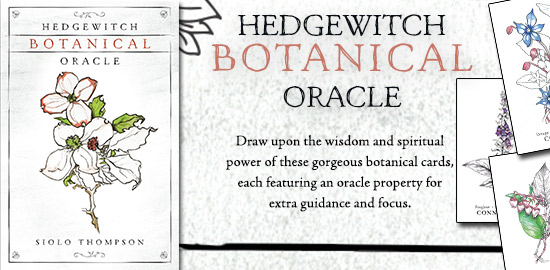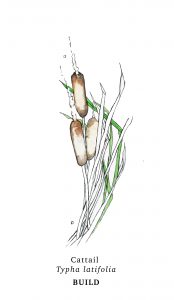Hedgewitch Botanical Oracle

To see more, click
Welcome to the Hedgewitch Botanical Oracle. This collection of 40 botanical cards draws inspiration from the grimoire of Hedgewitches – wise folks who walk the thin places between one world and another. These Healers, helpers, and shaman find the plants of their practice at the edges of cultivated fields as well as deep in the woods, wilds, and along shorelines. Each lovingly illustrated card includes an oracle property that can provide guidance to a seeker or meditative focus to a querent. Like these walkers between worlds, almost without exception the plants in this book are also living at the edges – the edges of disturbed lands with agricultural or industrial history, along hedgerows, roads, parks, and even in your own backyard. In most cases these are feral, rather than wild, the botanical histories of these plants is interwoven with our own for thousands of years in which they have been cultivated, disseminated, prized, ignored, treated as weeds, and ultimately spread to every corner of the earth.
The creation of this deck was inspired by Siolo’s own quest to become more knowledgeable about the plants around her and those at the root of a witch’s natural healing practice. Delving into the properties that tie these plants to divination and tarot has been a great process of discovery and delight. Each card in this series is lovingly illustrated in graphite, ink, and gouache and the accompanying book has information about the plant, its use and its properties as an oracle tool.
Here is an example:

Cattail
Typha latifolia
Typha are a family of aquatic perennial plants with long graceful leaves and thick, sausage shaped rhizomes. When ripe, the heads disintegrate into a cottony fluff of seeds which are carried away by the wind. Many parts of the Typha plant are edible and useful to humans. The starchy heads can be harvested from late autumn to early spring and are nutritious when processed into a flour. They are fibrous though, so the starch must be scraped from the tough fibers. The heart of the outer portion of young plants once peeled, can be eaten raw or boiled and has an asparagus like flavor and is sometimes called Cossack Asparagus because of it’s popularity in parts of Russia. The leaf bases can be eaten raw or cooked, especially in late spring when they are young and tender. Even the pollen from the spring flower is edible and can be combined with egg, porridge, or soup as a thickener.
While this plant is a great potential foodsource it is much more widely used as a building material. The rushes and leaves are used to weave seating, roofing, insulation, boats, even whole floating islands upon which people build their houses! Animals like muskrats and beavers also use the rushes to build and insulate their homes. The oracle property BUILD is a perfect fit for this useful plant. There are times in life when we have to focus on immediate goals and concerns and there are times when we should be building, strengthening our foundations, and planning for the future. Relating this oracle card to tarot cards, one could connect it with the Ten of Cups or the Ten of Pentacles which both speak to building legacy, relationships, and the foundations of a strong home. If I were to create a Three of Wands card today I would definitely use cattails in the imagery because that card speaks strongly of planning for the future, looking ahead, and investing time and effort into personal development.
Other names: bullrush, reedman, reedmace, punks, corndog grass, Cossack asparagus
Oracle property: BUILD









